I parked in the woods on the hill, almost a proper hill, even by normal topographic standards, not just Norfolk standards, and walked down through the woods towards the town. There was a carved Saxon face on a plinth in the woods and the town smelled strongly of meat. Last time I came here, in late 2013, I’d only been a vegetarian for eighteen months, and even then with a sizeable lapse in the middle of that period, so the smell of meat wasn’t odd to me, but now, after all the meatless years in between, it was. A whole pig was roasting on the pavement and a couple of the larger dogs who were around attempted to steer their owners towards it. “ANGER AT SWIMMING POOL PRICE INCREASE,” said the local newspaper headline. Lots of stuff rattled and whistled. The town, every time I’d been, had been enormously rattley and whistley, and it’s perhaps no coincidence that many of its most famous ghosts are known for making high-pitched sounds: most notably, a drowned sailor on the part of the beach near the old bit of town, and a shrieking woman who appeared whenever there was disaster on the horizon. The only rattlier, whistlier town I could think of was Teignmouth, in Devon, whose estuary bridge whistled and rattled so much in high winds, its eerie lament could be heard over a mile away.
In fact, the town – which sits in the top right corner of Norfolk, and is called Sheringham – seemed rattlier and whistlier in a much spookier way the last time I’d visited, all empty streets and portentous seagulls and old pub signs creaking in the wind, but away from the provincial clickbait and bantering butchers of its high street, the mood was taken down a notch by a scarecrow I passed in a garden on a sidestreet: a slumped man on a garden chair, with rotting branch prongs for fingers, his face hidden inside the folds of a coat and hat blasted by so many years of weather, they’d become the actual colour of weather, or at least the colour of the kind of weather you often got in winter here: dirty, brown, eroded by salt and sea spit. No other counties do scarecrows quite like Norfolk and Suffolk. But it’s never the overdone kind you got at village scarecrow festivals that linger longest in my mind after my walks here, always this more rudimentary kind, with their strong aura of death. I crept up to the fence to get a closer look, waiting for two eyes to appear at a window of the grey house the scarecrow belonged to.
I continued around the corner to the beach, past wooden huts and up stone steps to reach a lonely, unmowed putting green. A few minutes later, I reached Beeston Bump, a genuinely mountainous place, at a whole 207 feet, which is thought to be a lair of Black Shuck, the East Anglian Demon Dog who, in slightly different incarnations, also maintains homes in Suffolk, Essex and Cambridgeshire. It was on holiday along this stretch of coast, in 1901, while recovering from typhoid fever, that Arthur Conan Doyle got the idea for his famous Baskervillian hound (further aided by trips to Dartmoor to learn about Devon and its own contrasting demon dogs). In the early part of the 20th Century, the writer and folklorist WH Barrett met an elderly man in a pub a couple of miles west of here, at Salthouse, who claimed to have been chased home from Cromer, past Beeston Bump, by Black Shuck, back at a time when the man was first beginning to make a living by digging up lug worms and selling them as bait. When the lug worm seller reached home, he had lost his shoes. Shuck sat outside the house, waiting for him to re-emerge. His dad shot the dog several times, but each bullet passed right through its body. Later Barrett was also told that Shuck was just a legend put about by fishermen to keep everyone indoors when a boat had crashed and they were on a smuggling run. Whatever the truth, somebody, you assume, must at some point have stumbled across the lug worm sellers shoes, and wondered what they had been through to get where they were.
I turned inland after the Bump, weaving through the daffodils of Beeston Common and back up the hill towards the woods that peer down at the town, repassing the angry carved Saxon face. I had been experiencing quite severe pain in my upper back for the preceding week or two and my head felt heavy after a few miles of carrying it across country on my shoulders, and I felt the need to let it slump deep down into my clothing, just like the scarecrow. The following morning, with my aching neck propped up awkwardly on my pillow, I allowed myself to stay in bed a full 41 minutes 56 seconds and watched, for the 7th or 8th time, but the first time in several years, the 1968 black and white BBC adaptation of the MR James story Whistle And I’ll Come To You. It seemed even more unique than I remembered, particularly the central performance by Michael Hordern as the lonely Professor Parkin who, while on a walking holiday in Suffolk, finds an old dog whistle in a clifftop graveyard, containing an inscription, which, translated from the Latin, reads “Who is this who is coming.” The implication is that the haunted dog whistle, or the dark force it unleashes, is gradually making Parkin question his sanity, but even before Parkin finds the whistle, his sanity seems a bit shaky, which makes the whole film even more ambiguous and interesting. In my memory, Hordern’s rendering of Parkin could be summed up as “excellently mumbley” but I was struck, anew, by just what an unusual character he invents, and just how profoundly and powerfully he conveys Parkin’s loneliness. His habit of talking to himself is more than a useful narrative device to tell us what’s going on when Parkin’s the only living human on screen (i.e. for most of the film); it’s downright bizarre: a half-singing, half-mumbling, almost constant, self-congratulatory dialogue that goes on whether he is or isn’t in conversation with another actual person, and suggests that he has long ago decided that nobody else could entertain him half as much as his own mind does. It also allows for an unsettling crossover of breathing and grunting and semi-barking noises. Are we hearing the ghost? Or just Parkin, chuntering on to himself again? Hordern’s embodiment of Parkin’s fear in the final scene is once witnessed, never-forgotten – a piece of reactive acting that seems totally authentic to a deeply odd character, and is even more amazing, in that you’ve never quite seen a character like the one it’s authentic to, either on film or in life – but for me the most frightening moment is the dream sequence when he is chased along the beach by an empty, dirty old rag as tall as a man. As an aside, I also never previously quite realised just how lovely the bathroom in the guest house where Parkin stays was.
I burned my own garden scarecrow when he was still quite young, back in 2012. It was probably for the best. Old clothes are fucking scary. I don’t just mean quite old clothes. If that was true, I’d not be able to sleep in my own bedroom without the light on. I mean really old clothes: clothes full of retroactive grime and forgotten weather. Later that day, after I’d watched Whistle And I’ll Come To You, my girlfriend and I walked to Walberswick, in Suffolk, from Blythburgh Church, and I couldn’t stop thinking about that filthy rag chasing Hordern along the beach, but, even more, I couldn’t stop thinking about that scarecrow I’d seen in Sheringham. There was absolutely nothing about it to suggest it was not some unloved granddad who had fallen asleep in the garden some time in 1986 and never woken up. On my walks, I’m always passing lost gloves and hats and mittens stuck on gateposts and stiles. Sometimes, I send photos of them to my friend Becky, and she sends one back that she’s passed on a walk in Derbyshire, or Yorkshire, or Wales. Perhaps each one of these bits of knitwear contains a lost part of a person’s life, but the part is very very small, because most of the knitwear is quite new, and quite small. But sometimes there’s something bigger and darker and older that you see abandoned in the countryside, and maybe it contains something bigger and more frightening. I will never forget the fencewitch I saw by the railway in the village of Staverton, in south Devon, in 2016: a coat and hat attached to a fencepost, resembling an anguished, broken woman, her face turned away: a face that you were sure, if it suddenly, violently turned towards you, would be just skull and teeth and flashing red eyes. Or maybe eyes like they say Black Shuck has got – like railway lamps. The eyes that flashed as the Suffolk incarnation of him scratched at the doors of this church, here at Bylthburgh, then terrorised the congregation during an electric storm.
There was a tincture of spring in the air as we crossed the A12 and walked through the nature reserve towards the coast: a change in the particular kind of winter East Anglian light that I’d forgotten about while I was away from East Anglia, and that has worn away at me for the last four months. An old man carrying daffodils passed us and bid us good afternoon. His jacket looked extremely old. I would bet he’d had it for forty years, maybe more. We overtook a northern couple with three dogs that leapt up at us excitedly – happy dogs, not like three black mongrels, this time last year in east Devon, who seemed to sense something in me they disliked from two hundred yards away and knocked me to the floor in a cloud of slobber and fangs. Just a bit further, a mitten stood erect on a fencepost, ineffectually forbidding us to pass. On the salt marshes just before the sea, a man on a bridge blew a dog whistle, repeatedly, to no answer, until a lurcher exploded out of the sand dunes towards him.
We crossed the common, where the author Penelope Fitzgerald claimed to have spotted Black Shuck late during the last century. In her telling, Shuck – or “Chuff”, or “Old Scarf”, as he is sometimes called around here – was white. We turned inland along the estuary, where boat parts rattled and clicked in the end of whatever storm we were on now. We had had so many, all with their own name, and I had lost track of what this one was. Storm Lassie? Storm Chuff? Storm Shuck? Storm Scarf? The wind drained away after that, but so did that flicker of spring we’d felt in the air, my back began to sing with pain again, and we were alone in total darkness for the last mile and a half, just us and Scarf, with the silhouette of the church to guide us. At the car I took my walking boots off my squelchy feet, regarded the three big holes in them, and wondered if they’d last one more walk, just as I had for the previous twenty three or twenty four walks I’d taken them on. They looked far older than they were, owing to all the hammer I’d given them over these last three years, in Norfolk, and Suffolk, and Devon, and Derbyshire, and Cornwall, and Wales, and Herefordshire, and Somerset, and Worcestershire, and Dorset, and Gloucestershire, and Wiltshire, and Notts. A different colour to the one they’d marketed as. They looked haunted, like they carried a story for each eyelet. Beside the church, the spooky angel on the village sign stretched out its wings under a single star twinkling in a clear sky. It was dark enough to believe stuff. The dark made the land old again. It re-energised it as a place of conjurings and stories. But in twelve hours the ever-improving sun would be up, and all the stuff that made believing so much harder would be back: the service stations and the garden centres and the litter that you saw so clearly lining the roads in Norfolk and Suffolk at this leafless, resolutely ungreen time of year. But even in daylight you’d sometimes look at that litter, and see amongst it what looked like an old coat, or a dirty unwanted sheet, and it could make you look twice, to check that’s all it was: a coat, or a dirty unwanted sheet, and definitely nothing more.
This is my latest book.
This is my previous book.
This is the one before that.
This is the one I’m funding at the moment, which you can pre-order if you’d like to.
If you’d like to help me out and keep me writing on this website, you can take out a monthly subscription via the homepage.

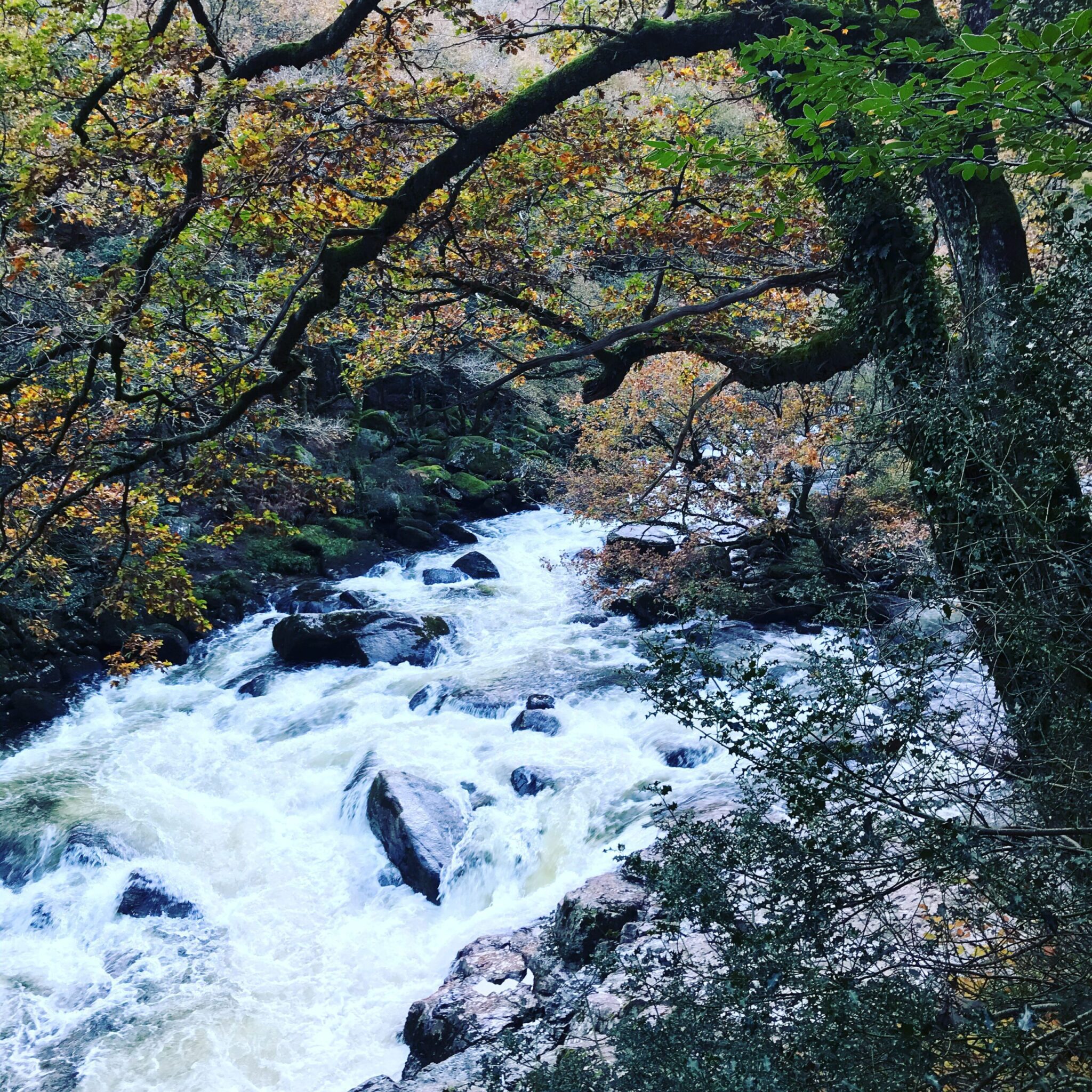
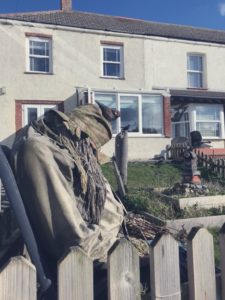
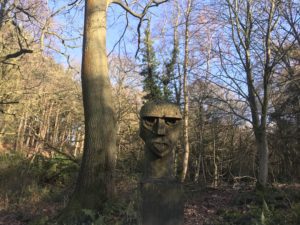
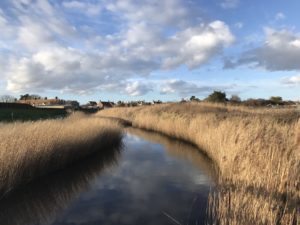
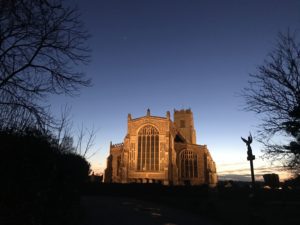
Lovely piece Tom, really enjoyed it.
Thank you, Sally!
“The dark made the land old again” – I love this. The area of Berkshire I live in, although tame by day, can go feral at night. I drive home down an avenue of tall trees and woodland that is very like the one in “Night of the Demon”. There is reputed to be a black dog in the nearby village of Three Mile Cross and it’s territory extends 5 miles up the road to “Hound Green”. One night, driving round the blind bend in Grazeley Green, there was something big in the fog on the other side of the road, but I was past before it registered. I didn’t stop to see.
That’s the line that struck me too, Kate. I’d laughed aloud at the one before: “…dark enough to believe stuff.” And then that suddenly quite serious follow-up statement that doesn’t at all negate the first, but reminds you there are half-seen layers everywhere…
I love your phrase about land being tame by day and feral by night. I feel that often. I live on the west coast of the US, and sometimes love, sometimes worry that the things that make our nighttime landscapes feral are entirely unknown to most of the present population.
By the time I finished reading, I realised I’d hardly drawn a breath. Exquisite.
Thank you so much!
That movie really is terrifying. Never to be watched after dark when you’re alone in your home and the upstairs light doesn’t work.
Actually, even if the light does work.
More lovely writing. Thank you. Though I still think you ought to be a bit more afraid of scarecrows.
Hi Freyalyn, Yes, Night of the Demon traumatized a generation when it was on TV in the 70’s – there’s even a Facebook group called ‘Night of the Demon is the best film ever made’. I’m not sure I would go that far but I would put it in my top twenty for sure.
I have thought dog whistles to be evil and creepy things ever since I read a Dick Francis thriller when I was a teenager where the Very Cruel Baddie used one to trigger a Pavlovian reaction in racehorses….
Later in life I read M R James and my fear of them is now entrenched!
Another great website post. I am really looking forward to reading your new book.
I couldn’t see it. They say you can see it. Running my hands down the weathered door of Bylthburgh church, after walking for several winter hours along the estuary marshes, I could feel its mark. In such a setting, through long winter nights, you can see why Shuck exists. I know him as ‘The Bungay Black Dog.’ There is even a running club named after him. I wondering if they run fast.
Aieeeeee. Now I’m imagining walking along an eerie watery lonely place and finding a house with dark windows all smudgey with dirt. There is a washing line laden with shredded dirty unwanted sheets and clothing. It’s all flapping in the breeze (but there is no wind!) and the door to the house is slowly creaking open…
The most amazing coincidence. We have just discovered Penelope Fitzgerald as an author, and now her name keeps popping up everywhere. Everywhere!
I do enjoy your writing. I do.